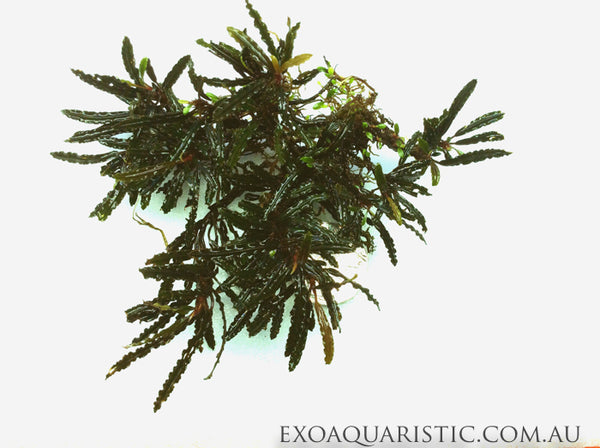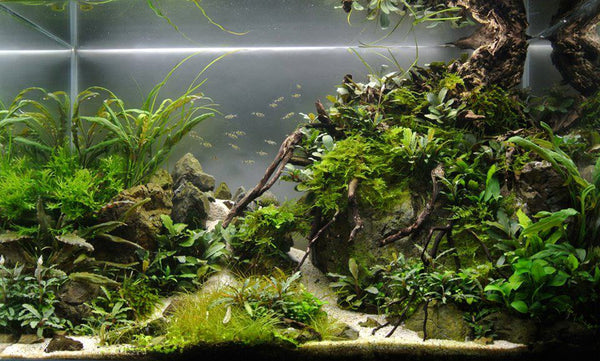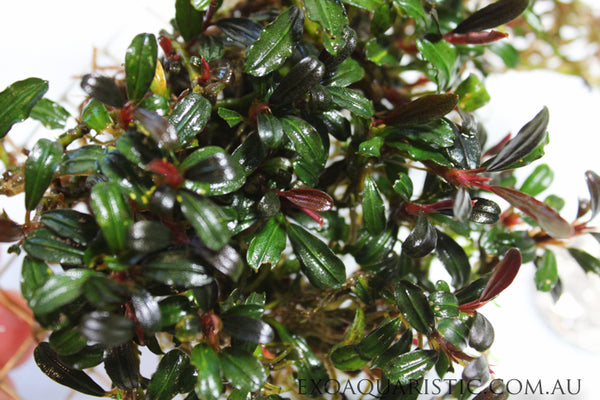In the way they look, Bucephalandra, also considered as 'Wavy Green", looks similarly to Cryptocorine and Anubias series. The Bucephalandra are relatively narrow and they have leaves which are coloured like olive, this is the main reason why they were compared to the series of Cryptocorine when they were newly introduced into the aquarium hobby which a lot of people have nowadays.
They are also compared to Anubias as well because their roots and rhizomes are very identical to those of Anubias. The Bucephalandra plant is considered to be very hard to find as they are so wonderful, they do not fail to catch the hearts of aquarists across the globe.

Bucephalandra is part of the wetland plant species Araceae family. Another fact about Bucephalandra is that they have successfully adapted living through the fast currents of fast-moving rivers.
To the scientific community, these plants have been there from 1858, even though they are considered a new species. Do you remember the black horse of Alexander the great? Its name was Bucephalus, this is where the plant Bucephalandra got its name.
Bucephalandra is considered endemic, which means they can only be found in some of the most isolated places. It is, however, round on one of the biggest islands of Malay Archipelago. The island’s name is Boreno.
Even today, more and more species of Bucephalandra are being discovered and some of them aren’t even registered in the books of botany.
Boreno, which is the largest island of Malay Archipelago, has a tropical climate. This means that Boreno witnesses the same kind of climate for the whole year. This type of consistency helps the plants like Bucephalandra to flourish, as they tend to grow in running waters and also can be found at the banks of rivers as well.
However, Boreno experience a rise in rainfall for some months, during that period the rivers tend to overflow and the Bucephalandra plant is completely submerged inside the water.
The submerging does not stop the Bucephalandra plant to grow, but when it is underwater, its characteristics slightly changes as it becomes more delicate and the colour becomes more intense.

If you are looking to keep the Bucephalandra plant as an aquascape or exotic attraction for your aquarium, it is suggested that they should be grown on, coconuts roots of trees and pieces of wood would also be good enough.
But personally speaking, Bucephalandra will thrive if grown on different kinds of rocks. The roots of Bucephalandra tend to thrive on hard surfaces instead of soft ones. Even if through the naked eye the roots of the Bucephalandra looks slippery, they do not fail to attach themselves to a hard surface so firmly that in order to get them off of that surface you might as well have to use a knife. This is a result of how tightly the roots hold on to a solid surface.
The Bucephalandra plants have a coping mechanism that works in such a way that if it detects a change in the environment or the water, it loses some of its leaves. This is the main reason why Bucephalandra in aquariums might lose some leaves because of some algae manifestation in the tank or even in fertilization changes this tends to happen.
It is very rare that the Bucephalandra plant decides to let go of all of its leaves, it also doesn’t happen quickly. This is a big plus as it buys the aquarist some time to get the environment of the aquarium back to normal.
Even if the Bucephalandra plant in your aquarium has lost all its leaves but the roots look healthy and firm to you, then you do not have anything to worry as the leaves will gradually come back in some time.
A lot of people have reported that if you face the problem of decreasing leaves, dimming the light of the aquarium and increasing the oxygen of the tank can help the Bucephalandra plant to grow back its lost leaves quickly.
If you have minimal lighting in your aquarium, the leaves will continue to grow but the colour will not be very eye-catching.

If you want absolutely gorgeous colours on your Bucephalandra plant in your aquarium then you need to try giving it strong lighting, in addition to that if you used more fertilization it will be more beneficial.
You can also use some CO2 in minimal amounts to go with the fertilizer it will definitely help the plant to display better and attractive colours. It is known that certain fertilizers are bound to help your Bucephalandra plant to have more beautiful and intense colours in comparison to the rest.
A lot of people complain about the new leaves of their Bucephalandra plant are not as attractive as they used to be, the sole reason for that is that their aquariums are low-tech, which means the Bucephalandra plant will not be able to get extra fertilizers through the water column. On other issues they mainly face is that of low lighting in their aquarium, as mentioned above, it needs more light in order to grow more vivid coloured leaves.
It is quite sad that including Bucephalandra many other exotic plants are heading towards extinction or are definitely becoming harder to find. The main reason for the extinction of such plants is that the forests of Boreno are being cut down in a really quick manner.
Those plants which are in danger because of the deforestation will continue to be in this world in the captivity of the aquariums but we really hope in the future, Boreno doesn’t become the victim of more and more deforestation and lose its valuable wildlife. It as a place has a lot to offer to the world and is being used in the wrong manner.
All we can do is hope that they find it in their hearts to preserve such beauties such as Bucephalandra and many other plant species within their forests.








